“We find after years of struggle that we do not take a trip; a trip takes us.”
― John Steinbeck, Travels with Charley: In Search of America
I recently drove across America and back again. The eastward part began by traversing the volcanic wreckage of central Nevada. Driving east, away from the sheer wall of the Eastern Sierras, traffic dropped to near zero and we crossed into Nevada from California under a steady drizzle. The prior volcanism in this area was inescapable, a landscape of geologic violence: ripped valleys, broken mesas, and collapsed peaks.
About 43 million years ago a period of volcanism began in central Nevada, one of the most intense such periods in Earth's history. An estimated 17,000 cubic miles of material—enough to fill a sphere with a 14-mile (22km) radius—was ejected in 250 major eruptions. The events buried the region in porous rock made from volcanic ash, called tuff, thousands of feet thick. Extinct calderas up to 35 miles wide can now be found in the mountains of central Nevada, remnants of massive volcanoes that erupted and then collapsed.
A trip like this should not be taken, as Steinbeck wrote, but take us, transporting you as you are transported—in my case, at least initially, into the violence of geologic time. But most trips don't do this. Because most travel is a waste of time, conflating experience collection with insights, increasingly so in the checklist world of "must-see" lists and the pictorial horrors of The 'Gram. As G. K. Chesterton wrote, clearly preemptively thinking of the latter, "travel narrows the mind". Travel becomes worthwhile when you stop seeing, step outside yourself, and start seeing with fresh eyes.
Here are some of the less geologic things I saw, and what I think they meant:
01. Service Worker Scarcity and Why AI Isn't Good Enough
The worker scarcity in service is still daunting. I saw multiple McDonald’s, for example, with signs in their windows offering $1,000 signing bonuses. Not the case when I was a kid. The shortage extends to diesel mechanics, where over-urinal ads trumpeted $100,000 salaries after 12-month apprenticeships at freeway garages—plus $3,500 in free tools.
This inspired my partner Eric and I to write a piece this week for our investors about structural imbalances in the U.S. economy, and why AI isn't good enough. Specifically, as we noted, we have too many jobs of some types, an aging population, and new rigidities, all of which conspired to create these signing bonus anomalies.
One example is how participation rates are improving, but still haven't returned to pre-Covid levels. This has caused the workforce to be short on the order of 5 million workers, given economic growth during the period.
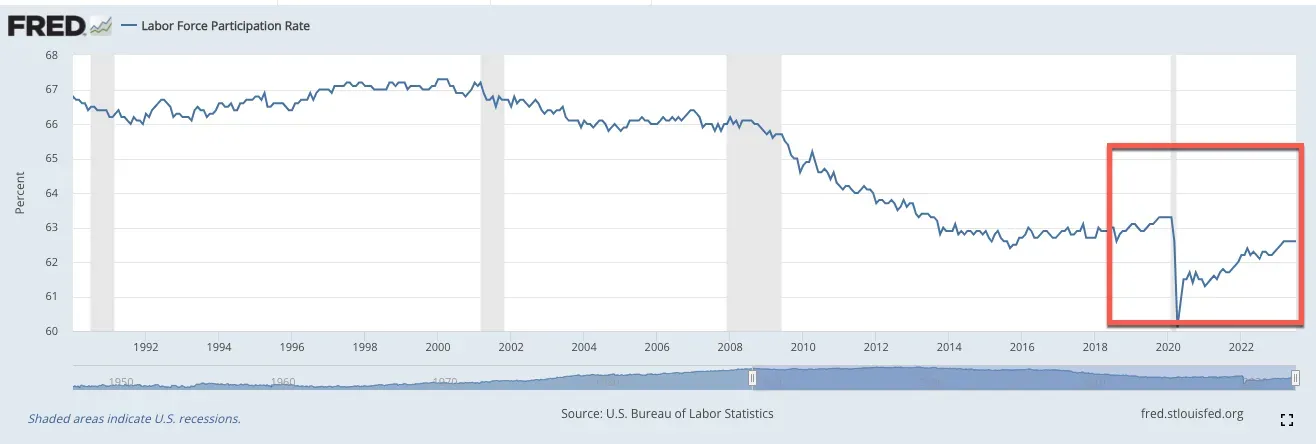
Historically, when labor became more expensive than capital companies in the economy would respond with automation. And we have a new form of automation that has come along—AI and LLMs—that seems perfectly attuned to many of the needs, in that large language models are the first form of technology to be useful in occupations with tacit knowledge, where it is always easy to describe what we do, like in fast food customer service.
But that has not happened yet. It's partly because we are early in the implementation phase of this wave, even if it is almost a decade since the seminal papers that sparked the wave. We argued in our piece that part of the problem is that current AI isn't "good enough", and that it either needs to be much better—combining sizable workforce disruption with massive productivity improvements—or much worse—minimal workforce disruption with modest productivity benefits. Absent either, we end up in a position that Acemoglu and Restrepo (2019) described as "so-so" automation, and our current trap just gets worse.
02. Iowa ♥️ Cleantech Infrastructure
Differential clean tech infrastructure uptake is fascinating, with virtually nothing (solar/wind) freeway-visible in northern Nevada, northern Utah, southern Wyoming, and across Nebrasks. That doesn't mean it doesn't exist, of course, but a cross-state sampling via freeway was nothing like crossing California, where wind and solar farms are reasonably widespread.
But that all changes when you get to Iowa. It is startling how many wind farms there are in the state, many visible from freeways: fields of wind dreams, I felt forced to call it. The state now gets something like 63% of its energy from wind, and new farms are going up all over, as evidenced by the stead steady stream of flatbed trucks with giant wind blades being transported to new installations.
You can see the wind generation totals and growth in the following figure. Iowa added more wind capacity in four out of the last five years than existed in the state prior to 2008. This growth also helps explain why wind turbine service technician is consistently in the top 4 fastest growing occupations in the U.S.
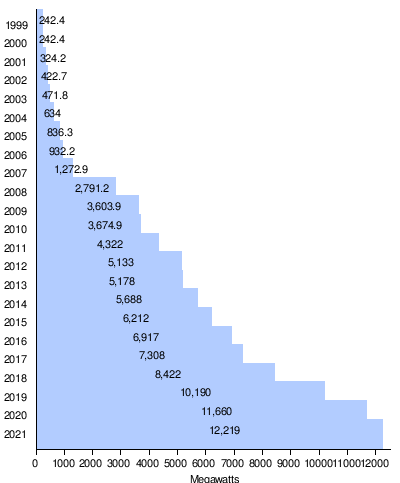
03. EVs? They're a California Thing
The near-complete disappearance of EVs once I left California was startling. They are a sizable fraction of California traffic, often 10% or higher, especially in metropolitan areas. But even outside metros, like in the Eastern Sierras, the number of EVs around you at any moment is often striking.
This is, of course, caused by various forces. California has had longstanding subsidies for EVs, and the state has some of the most developed charging infrastructure. As studies show, there is also a contagion or neighborhood effect, where knowing someone with an EV induces others in their physical or social circles to do the same.
Once you leave the state, however, all of these factors change. I crossed Utah, Wyoming, Nebraska, Iowa, and Illinois, all of which are among the lowest rates of EVs per capita. California, of course, is an exception in the other direction, as the following graphic shows, at a country-high 27.55 EVs per thousand people. No other U.S. state comes close.
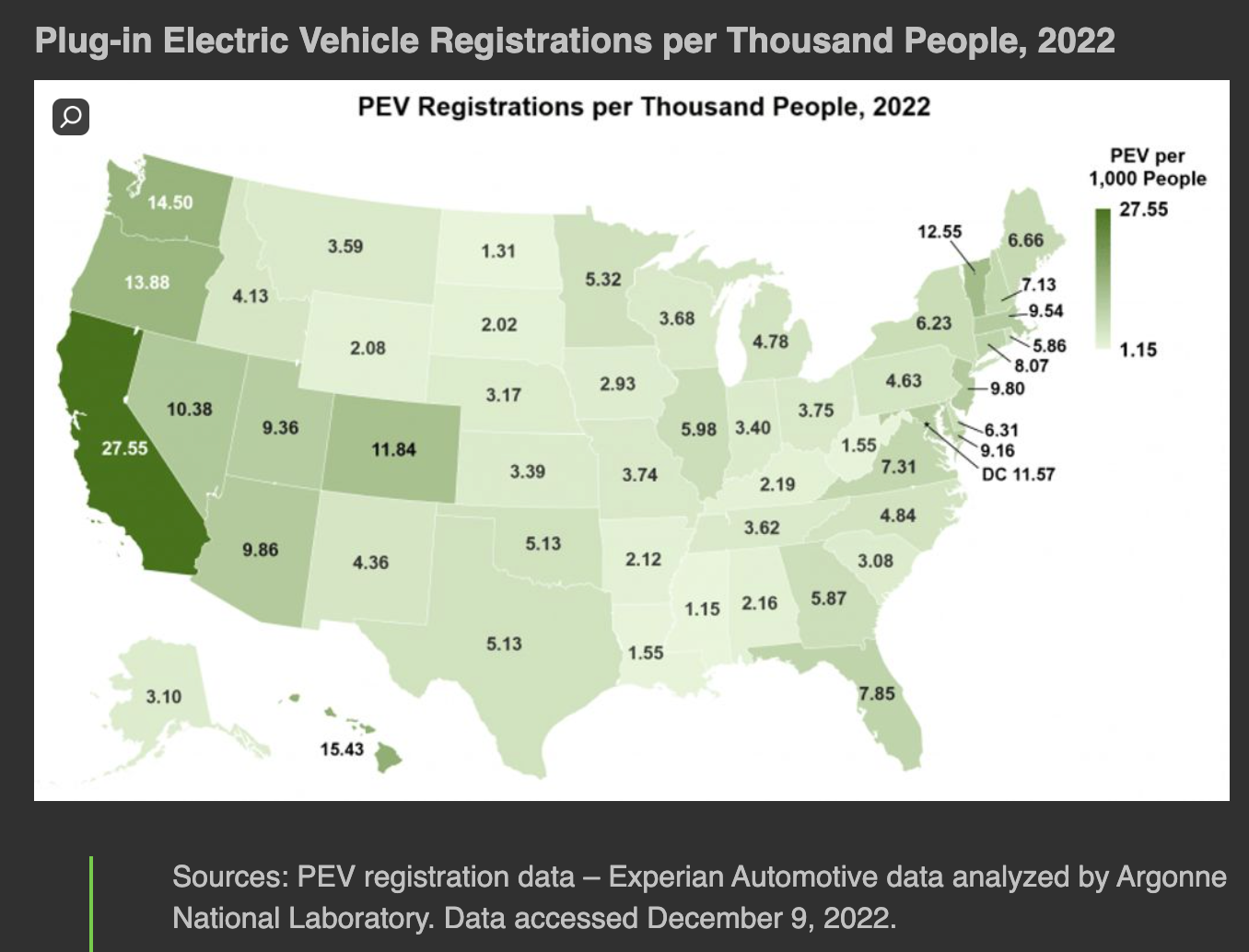
04. Colorado Tree Deaths
Having not crossed Colorado's Front Range in summer in some time, the changes were startling. First, the traffic on I-80 all the way over the pass was, despite being midday on a weekday, as if it was mid-ski season: dense and stop-start. Second, the eastern slopes of the Front Range are much more pockmarked with homes than they were a decade ago, most of them thickly embedded in this fuel-rich landscape. Third, the level of tree mortality had soared. Vast hillsides were covered in dead and dying trees.
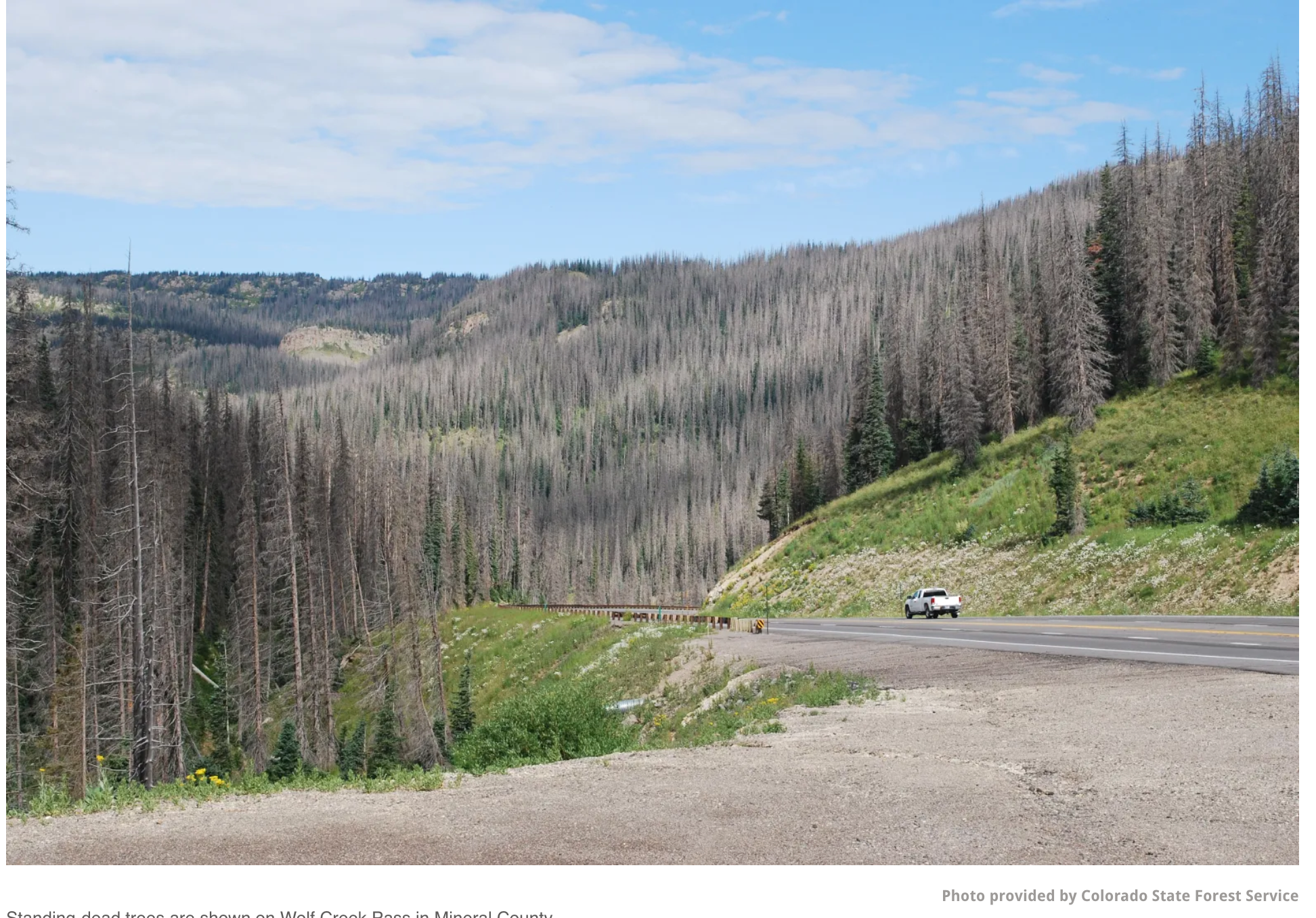
Studies show that is a combination of water deficits and bark beetles, with the latter causing more deaths in already drought-stressed trees. The result has been a multi-decadal acceleration in tree deaths, at all sizes and ages, as the following figure shows.
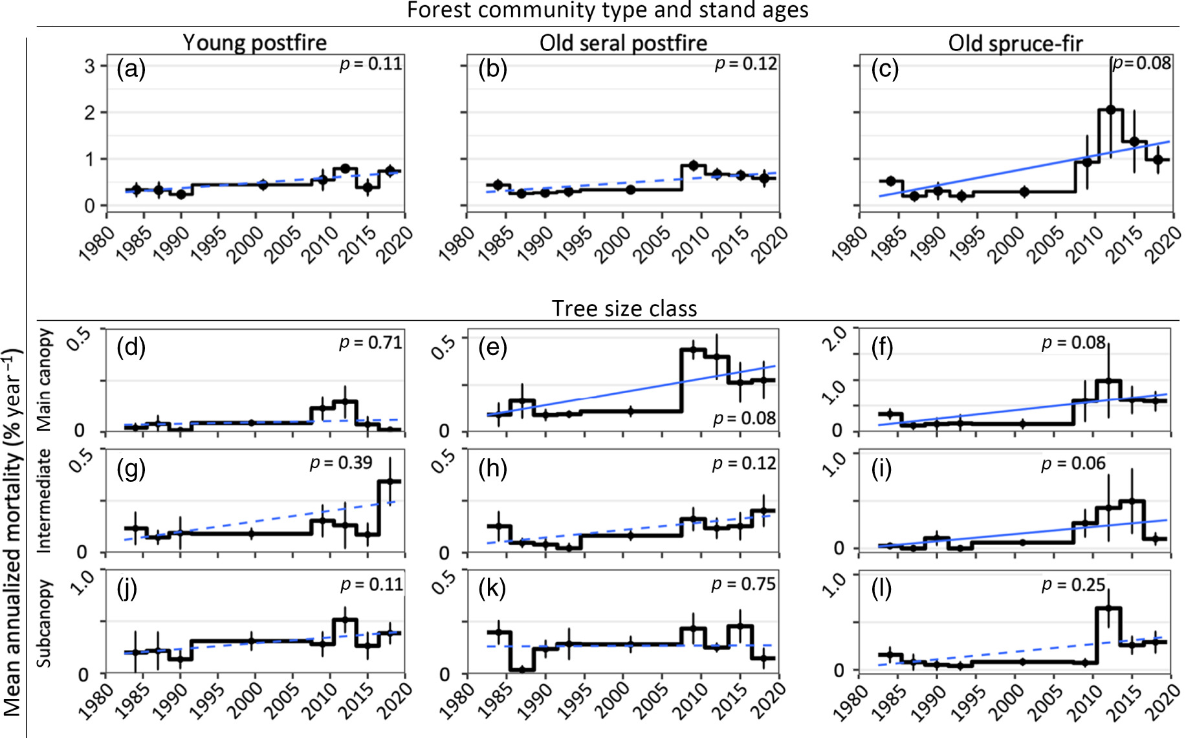
Estimates vary, but there is a general consensus that more than 10 million trees have died in the Front Range since 2010, and it shows no sign of slowing, given the causes have, if anything, become more entrenched. With humans even more embedded in larger numbers in this landscape the consequences of inevitable massive wildfires become larger and larger.
Talking to Papers: Risk and Ensemble Boosting
In part two, for members only, I talk to a paper about risk, climatology, and an ensemble boosting methodology. While developed for climate systems, the method has wider applicability for analyzing risk in complex systems where we lack data with all the necessary variance.
Here is the discussion:

